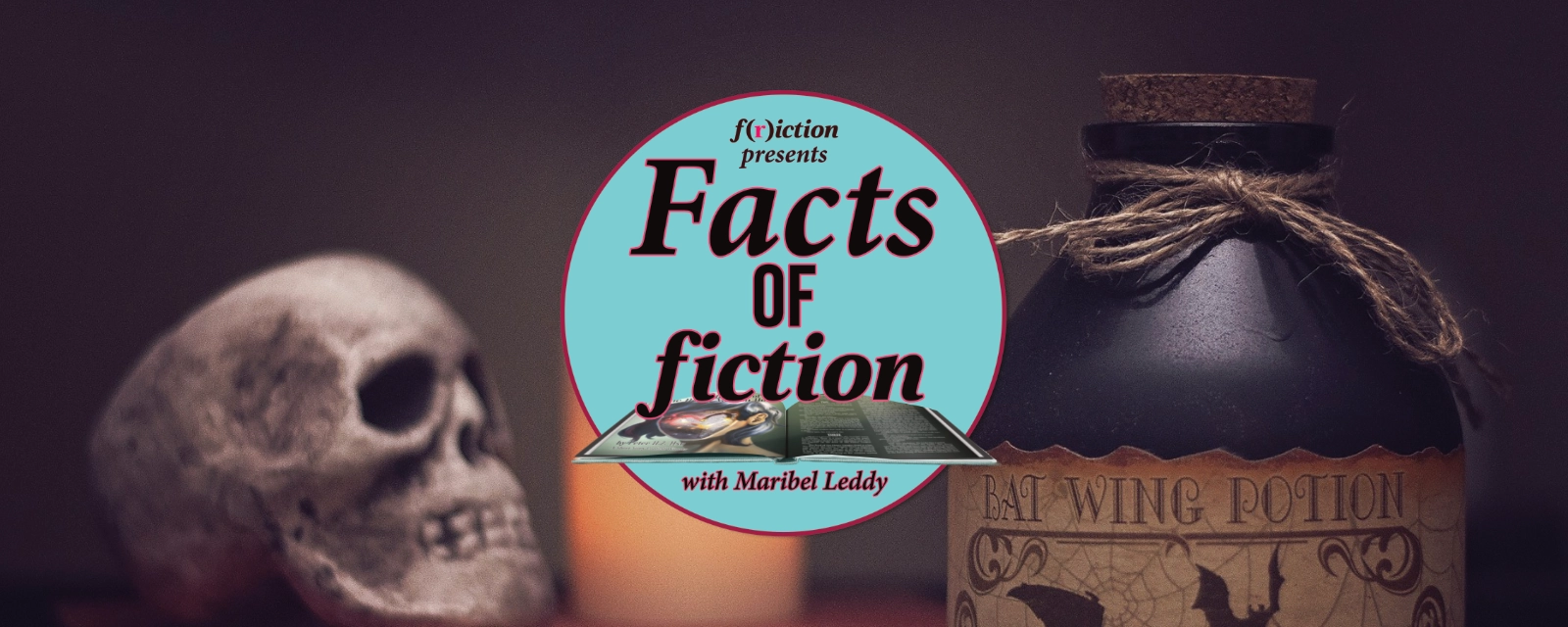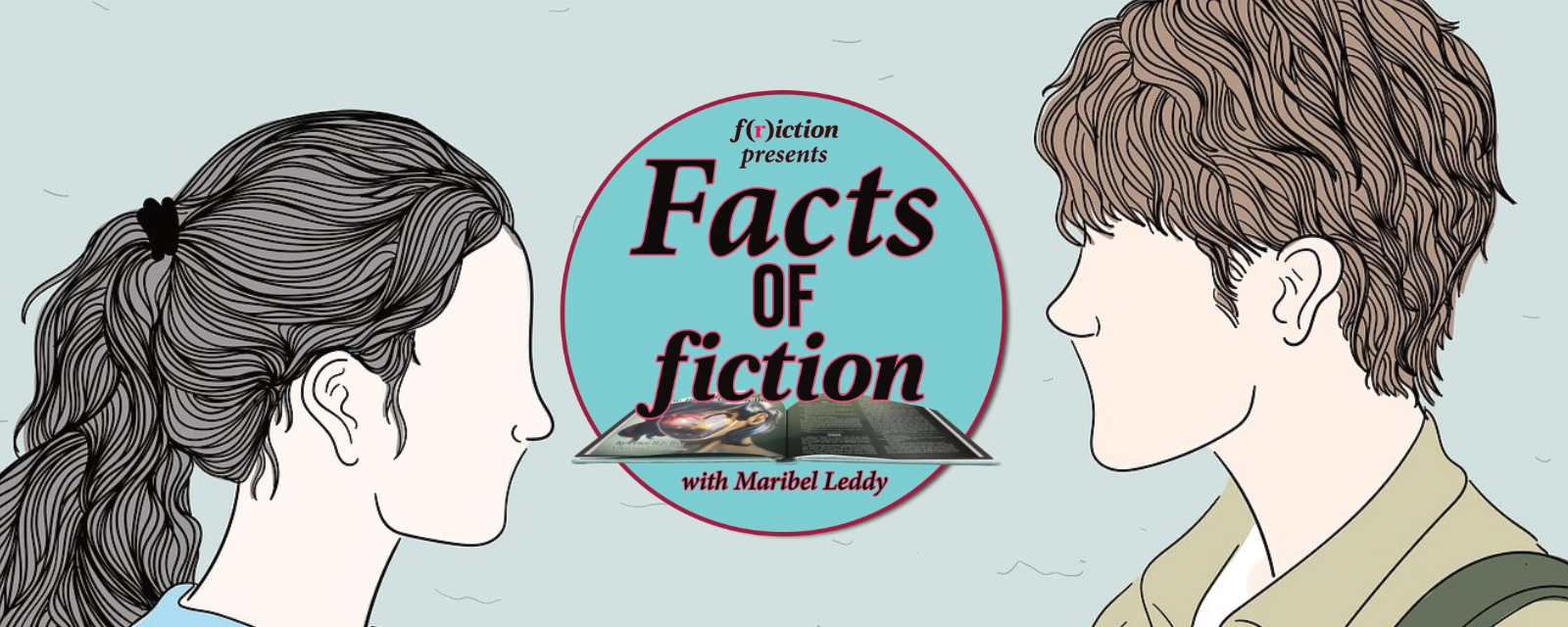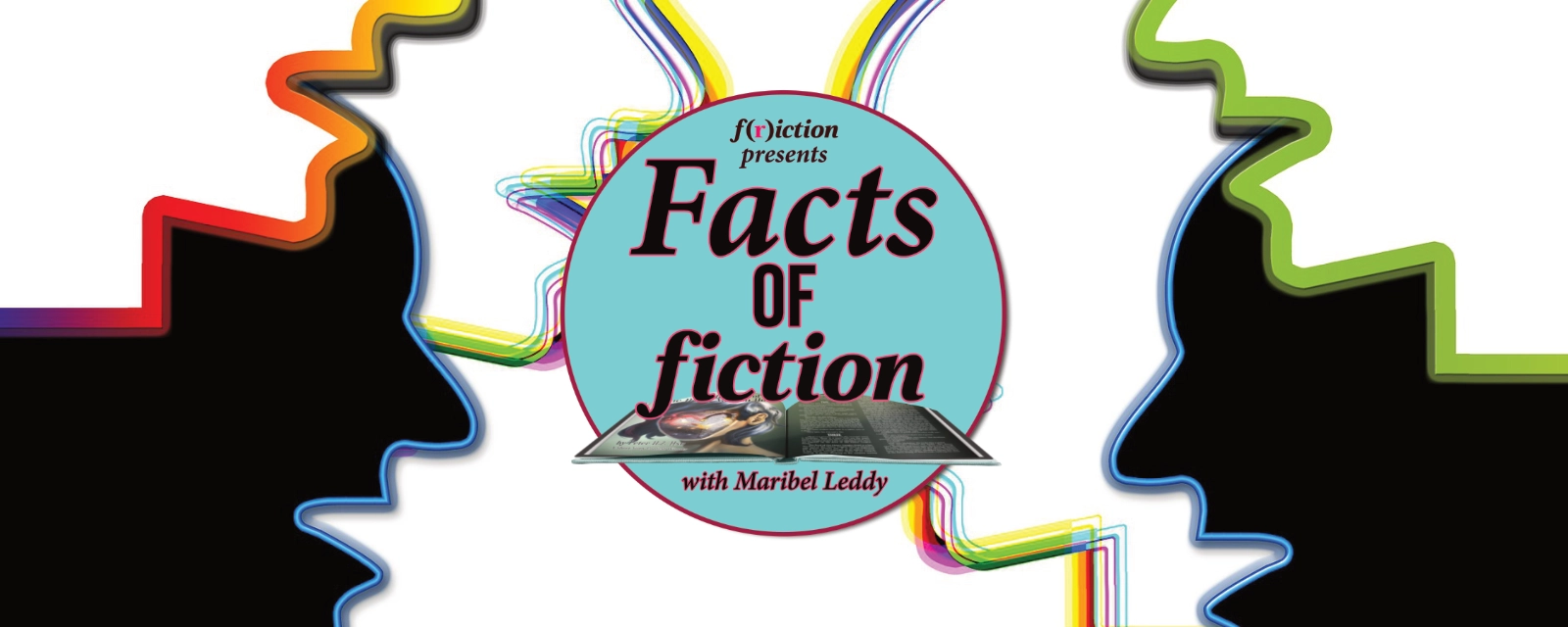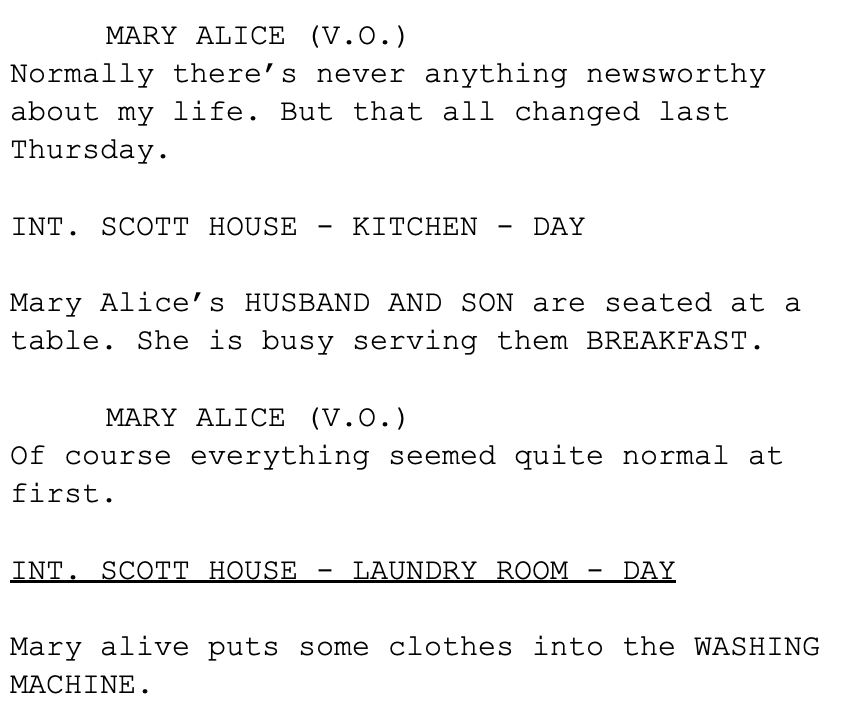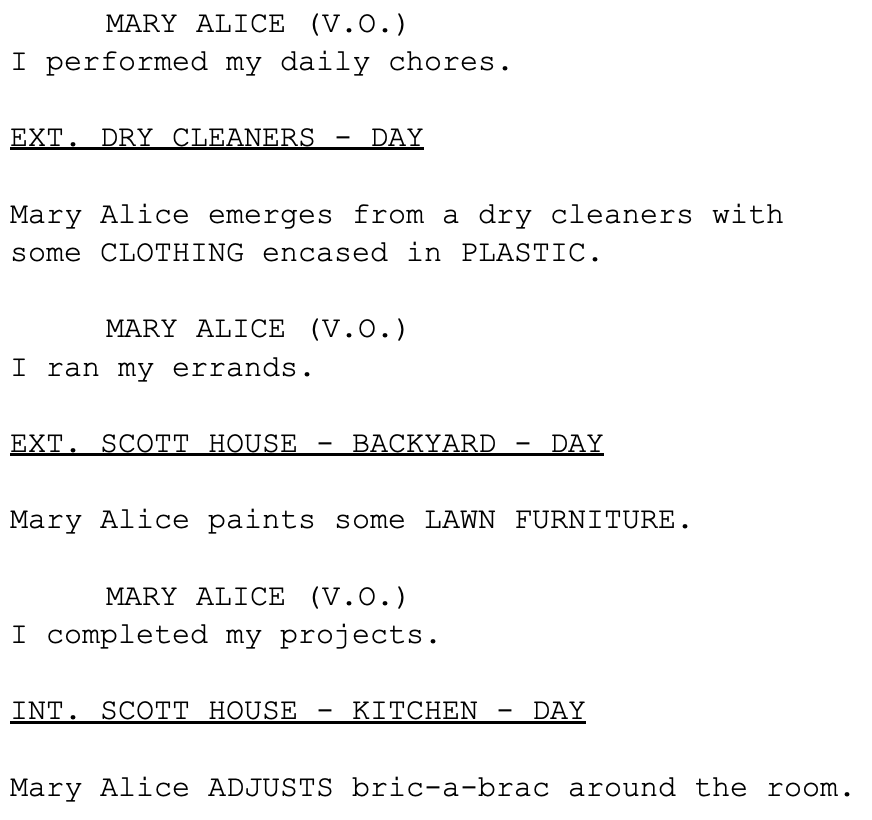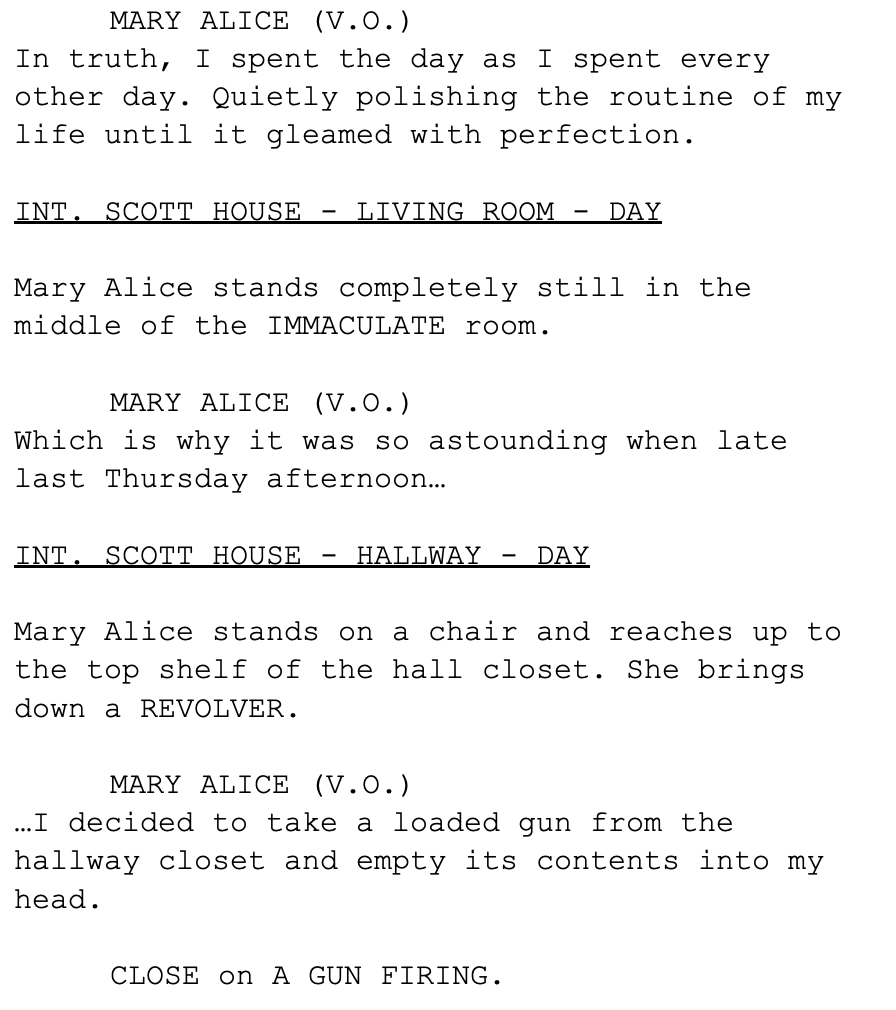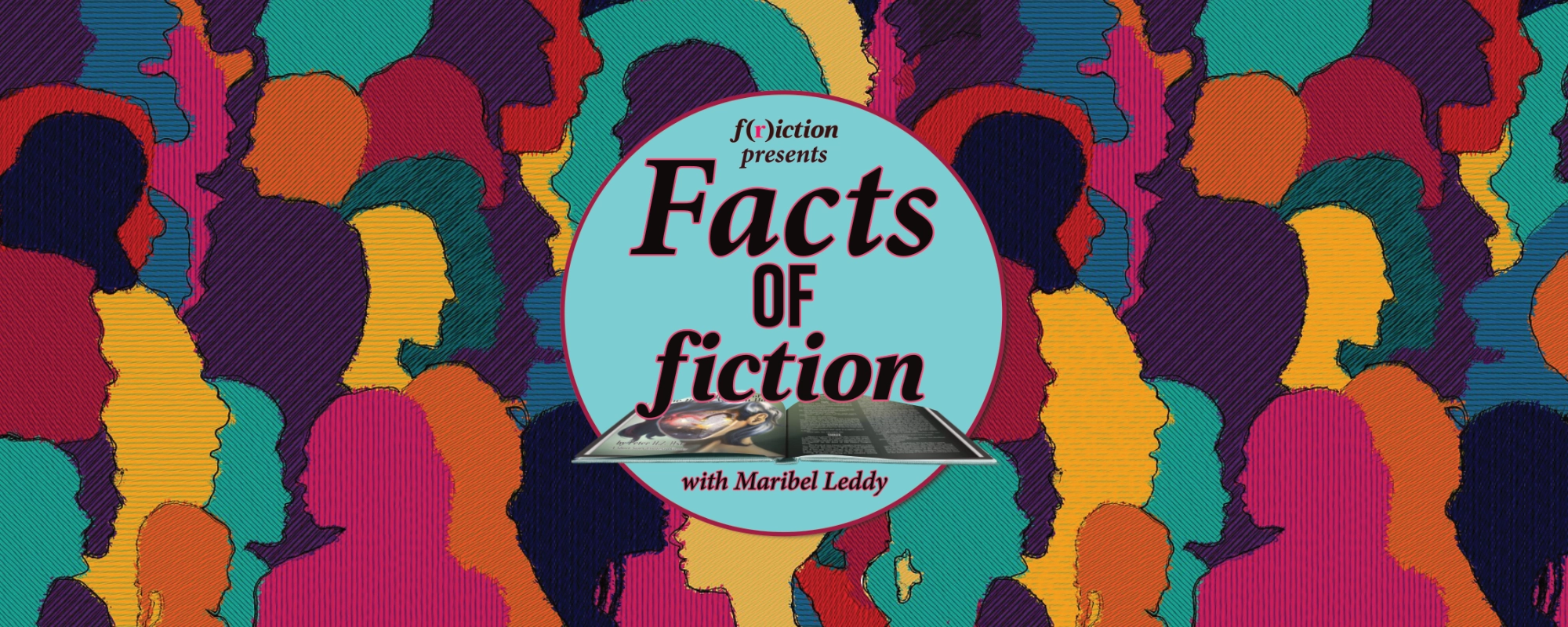We asked writers, editors, and readers to teach us how they approach diversity in their works.
Before we dive in, let’s pose the question: What is diversity? According to the dictionary, diversity is “the state of being diverse; variety,” meaning to have “a range of different things.” It can also refer to the practice or quality of including people from a range of different social and ethnic backgrounds and of different genders, sexual orientations, religions, ages, and more. In the real world, it appears all around us.
When you think about diversity in storytelling, what comes to mind? Is there a piece of media you think of immediately? Does a specific author who you feel does “diverse writing” come to mind? Do you think of advice you’ve heard or read about approaching diverse topics? Does the thought of approaching these topics in your own writing scare or intimidate you?
The truth is, there is no one way to write diversely, or to get diversity right 100 percent of the time. Don’t let fear hold you back from telling the best story you can tell. Using authentic, human experience and invoking through your writing (or other form of art) the emotions you have felt and understand will help you write about things that you may not have experienced yourself. You can be sensitive towards and fully embrace diverse topics within your story where it makes sense in an educated, articulate, and respectful way.
To help you out, we asked a number of F(r)iction writers, readers, editors, and staff members to weigh in with their best tips for writing diversely and tackling diverse topics.
Meet Our Respondents
Clayton Bradshaw-Mittal, a queer, previously unhoused veteran, wrote “West Texas Ghost Story” for F(r)iction, the Unseen Issue. Their fiction can be found in Story, Fairy Tale Review, South Carolina Review, and elsewhere. Other work of theirs appears in The Rumpus, Barrelhouse, Consequence, and other journals. They teach at the University of Cincinnati-Blue Ash and are the Managing Editor of New Ohio Review.
Charlie Claire Burgess is a writer, artist, and tarot reader in Portland, OR who wrote “Fools and Believers” for F(r)iction, the Arcana Issue. They are the creator of Fifth Spirit Tarot, an independent tarot deck that centers around LGBTQ+ folks, the author of The Fifth Spirit Tarot Deck Guide, and the host of The Word Witch podcast. Their writing has appeared in Hunger Mountain, New Stories from the Midwest, Third Coast, and elsewhere, and their short fiction has received a Pushcart Prize Special Mention. Charlie received their MFA at Vanderbilt University.
Exodus Oktavia Brownlow is the author of “At My Gynecologist, the Ghost Gloves Go to the Garbage and the Too-Green Girls Become a Little Less Green,” which is found in F(r)iction, the Bodies Issue. She is a writer, budding beekeeper, and rising seamstress currently residing in the enchanting pine forest of Blackhawk, Ms. You may find her, and more of her work, at exodusoktaviabrownlow.com.
Audrey T. Carroll, author of “The Script Doctor” from F(r)iction, the Unseen Issue, is a Best of the Net nominee, the author of Queen of Pentacles, and the editor of Musing the Margins: Essays on Craft. Her work has been published or is forthcoming in Prismatica Magazine, Miracle Monocle, Glass Poetry, Vagabond City, So to Speak, and others. She is a bisexual and disabled/chronically ill author who serves as a Diversity & Inclusion Editor for the Journal of Creative Writing Studies. She can be found at audreytcarrollwrites.weebly.com and @AudreyTCarroll on X (Twitter), Facebook, and Instagram.
Patricia A. Jackson is a high school English teacher in Pennsylvania and author of “Unmasked” from F(r)iction, the Unseen Issue. Her debut novel Forging Nightmare is a delightfully heretical urban fantasy with a Black-led cast of fallen angels, infernal warhorses, and the Four Horsemen of the Apocalypse. She has also published in the Star Wars universe; her latest tale “Gone to the Winner’s Circle” appears in From a Certain Point of View: Return of the Jedi. When not grading flash fiction, fighting right-wing book bans, or gaming, she is off spoiling her horses, Maya and Indy. Patricia is represented by Sara Megibow of KT Literary.
Dominic Loise is a Content Creator and Staff Writer for Brink. He lives with his librarian wife Jenna, their rabbits, and many books. He met his wife one night over a shared love of reading Ray Bradbury. The rabbits love books too but aren’t readers. As a content creator for F(r)iction, Dominic writes book reviews, does interviews, and has a series of personal essays about pop culture and health. He is open about and advocates for mental health awareness. Dominic can be found at @dominic_lives on Instagram and X (Twitter), where he shares recently published work.
Nate Ragolia is the Communications & Marketing Director and a Senior Editor at Brink. He is an author, editor, publisher, and podcaster who has published three books, There You Feel Free, The Retroactivist, and One Person Can’t Make a Difference. Nate co-hosts Debut Buddies, a podcast about firsts, and is co-founder of the indie press Spaceboy Books. At F(r)iction, he leads communication and marketing, writes grants, serves as a senior editor, and collaborates with the leadership team on a wide variety of projects and programs. He has also dabbled in webcomics, e-zines, and music blogging, and worked in community wealth development and nonprofit strategy. When he’s not doing the things listed above, Nate is a husband and dog dad.
Calvin Shaw has many works published, including in Arts & Letters, Midsummer’s Eve, Blackout, Black Works, The Skewies Awards: An Award Anthology 2023, and A Year of Hygge (Fall). He loves listening to music, laughing with family, and watching sports. Calvin writes poems everyday, ranging from erotic to horror comedy. Calvin and his works can be found on Instagram at @1995calshaw.
Francis Van Ganson, author of “As Above, So Below” from F(r)iction, the Bodies Issue, is a bookseller, zinester, and organ donor. Their McDonald’s order is a medium fry and a large iced coffee with cream and sugar. Their work can be found in Cotton Xenomorph, Foglifter, and Triangle House Review.
Here’s what they had to say!
Q: What are some of the best examples, in your opinion, of diverse writing done well, whether it’s diversity in character, setting, theme, or other?
In Short:
Our respondents have a number of stellar recommendations for books, authors, films, and more that serve as some of the best examples of diverse writing done well. These include (but are not limited to):
- Works by Bryan Washington
- The Left Hand of Darkness by Ursula K. Le Guin
- Wild Meat and the Belly Burgers by Lois-Ann Yamanake
- Tell Me How Long the Train’s Been Gone by James Baldwin
- Mexican Gothic by Silvia Moreno-Garcia
- The Bluest Eye by Toni Morrison
- Get Out, directed by Jordan Peele
- The Star Trek universe
- Dhalgren by Samuel R. Delany
Clayton: Bryan Washington is probably the best writer at this right now. He manages settings (especially Houston and Japan) and the people who inhabit those settings with care, placing the individual concerns and struggles of characters within the container of the setting and allowing struggle and conflict to erupt out of these concerns. He does not create a monolith, instead representing the queer, multicultural reality of the working class. His characters are from all backgrounds, yet he manages to imbue each with a humanity and vulnerability that recognizes the varied experiences of the people they represent.
Charlie: When I read for pleasure, it’s almost always fantasy, sci-fi, or imaginative fiction of some sort, and I think these areas can be really generative spaces for a diversity of characters, settings, themes, and more. However, they can also be just as normative as the rest of the writing world, especially when it comes to queer characters and themes, with a few exceptions. The standout work that comes to mind for diverse writing done well is Ursula K. Le Guin’s The Left Hand of Darkness, which centers on “ambisexual” people who don’t have fixed genders or sexualities and who live in a society that hasn’t been shaped by gender roles, divides, and power dynamics. Another, more recent novel I’ve adored is Confessions of the Fox by Jordy Rosenberg, which takes queer liberties with the legendary 18th-century English thief Jack Sheppard and a diverse cast of characters to explore (and explode) themes of gender and sexuality, race and class oppression, ecological destruction, authority and freedom, and the erasure of the marginalized from history.
Exodus: What immediately comes to mind are the works “Wild Meat and The Belly Burgers” by Lois-Ann Yamanake, “Perfect Little Angels” by Vincent Anioke, and select works by Melissa Llanes Brownlee. Writers, who are unafraid of the poetry of language, of writing from generous perspectives (gender, ages), of immersing their readers within the setting that is often othered from an American one. Works that read as natural as to the breath. Never blocked. Never forced.
Audrey: Tell Me How Long the Train’s Been Gone by James Baldwin. I Keep My Exoskeletons to Myself by Mac Crane. Bad Cree by Jessica Johns. Mexican Gothic by Silvia Moreno-Garcia. What It Means When a Man Falls From the Sky by Lesley Nneka Arimah. Only This Beautiful Moment by Abdi Nazemian. Cosmoknights by Hannah Templar. The Haunting of Alejandra by V. Castro.
Patricia: I am not certain anyone can find a better exemplar than Toni Morrison’s The Bluest Eye. Nor a sadder one. Pecola Breedlove, a wretched, sexually abused character in the novel, is on a quest for happiness by replacing her brown eyes with blue ones. In one instance of the story, she believes that if she consumes a Mary Jane candy, she will be transformed into the candy mascot with blonde hair, blue eyes, and fair skin. Only then can Pecola be truly beautiful—human and deserving of happiness. Morrison takes the readers through the great depths of Pecola’s sadness in the book because there is no resolution for her except madness.
It frightens me to think that as a child growing up without seeing myself in film, TV, or books, that I was a Pecola, believing that heroes came in one default: blonde hair, blue eyes, and fair skin. It is a familiar and damaging anthem played over and over again.
Dominic: Some good examples would be how diversity in horror can show representation and resiliency from a cultural perspective in works since Jordan Peele’s Get Out, Us, and Nope, and seen in works like Antebellum.
Nate: Often, I think science fiction storytelling like Star Trek can be an example of diversity writing done well, both because in far-flung futures we might dream of an era when people are no longer measured by their race, gender, or sexuality, but also because these stories can approach complex issues within all facets of diversity from angles that aren’t rooted in 21st century human experience.
Calvin: Diversity in your characters helps the reader find the unique distinction of each character and how they can relate to that character. It could be something as small as a character having two children and a small stem-rose tattoo on their lower right calf and you may know that character personally or paint a depiction of them in your head. The setting cannot be stale, or the audience will not imagine where these characters are placed, which will ruin the story. The setting is the most important aspect outside of character development because a diverse setting provides the reader with an idea of what the tone/mood of the plot is for the specific chapter. Never use stereotypical or offensive speech when creating diverse characters because your audience will immediately turn off from the ignorance depicted for the character.
Francis: I think Dhalgren is a really wonderful example of a diverse book, because Delany is writing about the entire American project and the experience of living in an American city. The book has a big cast and all the characters feel like they’re based on real, recognizable types of people. The differing ways they talk, their beliefs, their actions, and their contexts reflect this.
Approaching this question from a different angle, Alice Winn does a great job writing across time and difference in In Memoriam, which depicts a gay love story set during WWI. Her characters are all very distinct and their understanding of their world reflects the depth of primary source research she did for the book.
I also want to draw attention to Anjali Sachdeva’s story “All the Names They Used for God,” which is a highly speculative take on the experiences of women kidnapped by Boko Haram in Nigeria. In an interview, she says that she wrote it because she was reading an article and was disturbed that it had fallen out of the US news cycle.
Q: What do you look for when you’re looking to read work that features diverse characters?
In Short:
Everyone looks for something a bit different, but when I read the answers all together, it feels like we’re all kind of looking for very similar things as well. What do you think? Here’s a preview of the brilliance our respondents shared:
- Work that allows each character to enter into conversation with their environment and experience.
- Work featuring characters who are fully fleshed, dynamic, and complex and more than just their “diversity.”
- Work that has connectivity and uniqueness, whether in setting, race, language, or culture.
- Work that has nuance, avoids tokenism, and displays individual complexity.
- Work with fully formed, three-dimensional characters with depth and meaningful arcs.
- Work that comes from a diversity of authors.
Clayton: Typically, I am looking for work that allows each character to enter into conversation with their environment and experience. This does not necessarily mean making the work about the experience (there is incredible work that does this), but also showing how a character’s background informs their interactions with the world.
Charlie: Just like with any piece of writing, I want to read stories about fully fleshed, dynamic, complex people who are so much more than only their “diversity,” which is usually just a nice way to say their marginalization. I look for characters who are driven by personal values, needs, and desires that may intersect with their marginalized identity but also go beyond it. For example, I love a trans character whose trans-ness doesn’t define them, who has more going on in their life and in their heart! Narratives of gender transition are important, but even then, a trans character will have more motivations in their life than just a weekly hormone shot. Or a character with a chronic illness whose disability is just a part of their life, not their entire motivation or a plot device. I also pay attention to the way a character is described or introduced. I love it when nonbinary characters are presented with they/them or neo pronouns in a matter-of-fact way, no need for explanation. I’m particularly sensitive to how trans, nonbinary, or gender-nonconforming (TGNC) characters are physically described. Sometimes, I can pick up on a cisgender writer who just can’t let go of hinting at a TGNC character’s sex assigned at birth, which feels especially discouraging because this happens to us so much in real life too.
Exodus: I am always searching for connectivity and uniqueness (be it found within that character’s setting, race, language, culture). I believe that the best way to treasure diversity is to honor the ways in which we are similar. We must also equally (and admittedly, I would go as far to say more) honor the ways in which we are dissimilar. In doing so, we get a greater understanding of the world, and how so many factors shape us. The similarities become the bridge, the variations become the opportunity to learn and to practice radical, unconditional forms of love, respect, and acceptance.
Audrey: Nuance, avoiding tokenizations, and individual complexity.
Patricia: I look for a story where the character represents me, and that does not always mean color. E.M. Forster referred to such characters as the ficelle. I enjoy character-driven narratives where the plot shifts as the protagonist evolves, not by the coming and going of events. However, I’ll be honest that as a Black woman, I am usually disappointed when heroes come in the standard default: blonde hair, blue eyes, and fair skin. That is the world I have been raised in, so I’m not surprised. But when a protagonist moves from the ensemble to center stage and looks like me?! I am delighted to see myself in them and more eager to get into the adventure.
Dominic: The work of Percival Everett is what I am looking for—American Fiction is a nesting doll of a family’s personal stories within the lies they tell themselves and the bigger lie the main character tells to hold up a mirror to what the publishing industry says it wants and puts out regarding diverse stories. Gene Luen Yang also achieves this in graphic novels.
Nate: Fully formed, three-dimensional characters with depth and meaningful arcs. The hearts of characters, and how they face the conflicts in the story, will always be the most important thing. It’s also essential to avoid stereotypes because they’re both reductive and boring.
Calvin: Authenticity, nothing more, nothing less.
Francis: That’s not normally a metric I use when choosing works to read. I often avoid work where an author is writing across difference because I find failed attempts at best uninteresting and at worst very grating. I do enjoy reading work that comes from a diversity of authors—I love things in translation, in a wide variety of genres, by people who grew up in different places than I did, from authors who also have day jobs, fanfiction, highbrow and lowbrow work. I get the most out of all varieties of writing when I read with intent to understand and, to the extent to which it’s possible, try not to impose my own ideas on a piece. A lot of my thoughts about meeting written work where it’s at are put beautifully in Matthew Salesses’ Craft in the Real World.
Q: Can you share some examples of good vs. bad writing when it comes to diversity?
In Short:
The Good
- Lot by Bryan Washington
- Coffee, Shopping, Murder, Love by Carlos Allende
- Her Body and Other Parties by Carmen Maria Machado
- How High We Go in the Dark by Sequoia Nagamatsu
- Works by Zadie Smith
- Work in which the author is also included or connected, in some way, to the piece.
- Works by Aliza Mann
- Stephanie Williams’ contributions to Marvel and DC comics
- Blacula: Return of the King (graphic novel)
- Writing which focuses on humanity and empathy, driven by the character’s choices.
The Bad
- “The Change” by Tony Hoagland
- Work written for the sake of writing about differences.
- Work in which a character’s marginalized identity is the sole reason for their existence.
- Inspiration porn.
- The character of Finn from the Star Wars universe
- The American Society for Magical Negroes
- Work littered with clichés and worn out tropes and stereotypes.
- Work that seems more interested in providing “good representation” of a particular group or community than trying to say something interesting or tell a good story.
Clayton: Bryan Washington’s Lot is among the best examples. It does a lot of work moving across borders to show the queer multiculturalism of the working class. Carlos Allende’s Coffee, Shopping, Murder, Love is so much fun and also plays with boundaries across culture, class, and sexuality. Of course, Carmen Maria Machado’s Her Body and Other Parties. Sequoia Nagamatsu’s How High We Go In the Dark is a speculative novel-in-stories that takes us across so many settings with an inclusive cast of characters. Oh, and anything Zadie Smith does.
On the bad side, I can think of many examples. One that comes to mind first is the infamous Tony Hoagland poem “The Change.” It’s a persona poem executed very badly. Any time a writer from the dominant side of a power structure centers a character from a marginalized group around their own experience is bad diversity writing. This is common in war literature. Queer-coded villainy (which is different than villains who are queer). Disability as characterization.
Charlie: I hate it when a character’s marginalized identity is the sole reason for their existence. That’s not diverse representation; it’s tokenism. I’ve seen a lot of writers insert “diverse” characters into their stories in order to tick a diversity checkbox, and the characters usually come across as stiff and one-dimensional, like cardboard cutouts. For example, a lot of my pleasure reading is fantasy and/or romance, and I’ve seen popular authors whose cis-het storylines I thoroughly enjoyed try to force queer representation in response to a perceived demand. While well-intentioned, the results tend to be comically bad! Usually, this looks like appling the same old binary gendered, cis-het relationship structures to queer relationships or romances, which in real life often function outside of masculine/feminine roles. (A lot of authors also seem to have difficulty imagining queer sex that doesn’t involve sticking something into something else!)
Bad writing replicates mainstream norms and values (which is to say, white, cis-het, able-bodied, middle class, Western, etc.) in supposedly “diverse” characters and storylines, or, alternatively, it fetishizes the diversity of those characters so it’s the only thing the characters are about. Good writing, on the other hand, attempts to fully imagine and live in the perspective and experience of the body, mind, time, place, culture, and reality of that character. Good writing has diverse characters who aren’t defined by their diversity and whose presence in the work feels dynamic, vital, and fully realized as an integral part of the story.
Exodus: For me, a good example of diversity would be one in which you’re also (fictional or nonfictional) included within the piece. Connected, in some way. A bad example of diversity in writing would be to write for the sake of writing about differences because one, you think it will warrant your popularity within publishing, two, you wish to shock people. As a writer, always ask yourself the whys. Within that why, and outside of your own ego, how would you respond to that potential piece? How would others?
Audrey: Badly written diversity can come from a place where the writer acts like the expert on experiences that don’t match their own identities, and/or from a writer’s intended audience. So, for example, writing disabled characters to make abled people feel better (inspiration porn; see: Stella Young) is not well-written diversity because it lacks nuance and individual complexity, and it objectifies disabled lives for abled eyes/ears.
Patricia: I’ll be honest. My peace is always under attack. So I do not stay in places where my borders may be breached. When I see something that bothers me, I tend to deviate course. But if I had to point to an example where diversity fell flat, it was the latest round of Star Wars sequels. John Boyega’s Finn suffers being not just a token, but a jester and a fool. He had the potential to be so many things, but I guess, in fear of a very toxic fanbase, he is left in a vapid storyline, with an incomplete character arc, and dashed aspirations. No Black person was surprised.
As for good writing, I know the leaders are out there turning things around. African-American author such as Aliza Mann’s work in the paranormal romance and romance genres and groundbreaking territory for Black women and men to truly see themselves in roles not generally assigned by the mainstream and not enough can be said about the earth-shattering contributions to comics that Stephanie Williams has brought to Marvel and DC, despite the reluctance to continue tearing down walls.
Dominic: A bad example is The American Society for Magical Negroes, which plays more like a romantic comedy than a satire, treating the message with white fragility to keep the audience watching. It does a lot of telling instead of showing when building the supernatural world of the secret society and the real world issues of white fragility.
A good example is the Rodney Barnes graphic novel Blacula: Return of the King. The original movie Blacula was drenched in camp and stereotypes from the first frame on, but the graphic novel presents grounded characters who you can relate to from the first page on. Both try to transcend stereotypes and replace diverse representation, but Barnes’ graphic novel is better at world building, character development, and showing rather than telling.
Nate: Good diverse writing, like any good writing, focuses on humanity and empathy, driving the story forward not because of how a character looks or where they are from, but through the choices they make in the face of the challenges presented to them. Bad diverse writing is littered with clichés, worn out tropes and stereotypes, and may hinge a plot entirely on assumptions that a writer has (and believes a reader has) about diverse characters.
Calvin: If I am writing about a holiday cross-country trip and the characters drive through Kansas to arrive in Missouri, it is best to do my research on the states involved and not offend the state by writing about offensive ideas I have or was told about the states. Find historical landmarks or hidden treasures about the area so the reader can be captivated by this state they didn’t know has hidden beauty, and allow the natives to feel a sense of pride from the story being told.
Francis: I can only speak definitively about my own experience, but I find it very boring and distasteful when authors seem more interested in assuring me that they’re attempting quote unquote good representation of my community than trying to say something interesting or tell a good story. It’s usually very obvious to me if an author doesn’t actually know what they’re talking about when they’re writing about something I’m familiar with, which makes me feel like my time is being wasted as a reader.
I hate to sound ungrateful, but I can usually tell when an author is trying to write a trans character but doesn’t know any trans people. I would much rather read an interesting story about cis people than feel alienated by a well-meaning cis person’s clumsy, fearful attempts at depiction. I know it comes from a good place, but that doesn’t make it any more enjoyable to read.
Often the giveaway is not stereotypes, but the author imagining a type of trans person that wouldn’t actually exist because they don’t know our cultural signifiers, ways of speaking, paths of becoming, and what trans people in different contexts may believe, say, or do. Obviously I don’t know every possible experience in the trans community either. Even writing about people similar to yourself involves writing across difference. If trans people can’t write books without other trans people getting mad at them for representational choices, I don’t know why cis people think they’re going to be able to manage it. I would hazard that this is true for a lot of communities.
For this reason, I worry that sensitivity readers are something of a false promise. There are easy pratfalls that a sensitivity reader will catch, but the idea that a sensitivity reader will keep the writer from making representational gaffes assumes that all members of a group feel the same way about how a character from that group should be depicted. I think we should be very wary of the desire to have someone speak definitively for an entire group of people or experience, particularly in a way that allows writers to wash their hands of the choices they’ve made. Like how translators are credited in a translation to make the work they do on the text visible, I think we should be cognizant of the fact that a sensitivity reader is just another person with opinions.
There seems to be this underlying belief that the problem of “diversity in writing” can be solved if enough privileged writers can just successfully write every kind of story. To me, long-term, comprehensive funding for the arts at all levels is the only way we’re ever going to change what kinds of stories are told and by which people. Diversity in literature is an institutional and structural issue and should be treated as one.
Q: In general, how do you approach writing diversely—whether it’s a character who is something you’re not, a setting you know little about, or a theme you haven’t explored yet?
In Short:
Everyone approaches this differently, but the top three tips we got from our respondents were:
- RESEARCH. Nothing will help you tell your story more, or to greater effect, than research, especially if you’re approaching writing about subjects you have little or no experience with. For more tips on research, check out our blog all about it!
- ASK QUESTIONS. Think a lot about why you’re writing this story from this perspective in this way. Ask yourself: Why am I writing this story? How can I avoid stereotypes related to this topic? How am I connected to this story?
- ACCEPT MISTAKES. You’re only human, just like everyone else. You’re bound to make mistakes throughout the writing process and even after you’ve published something. It’s okay to make mistakes—just make sure you listen and learn from them!
Clayton: I start by decentering myself and my experience. I need to inhabit the characters and consider their experiences, which are not necessarily mine. Then, I move into research, especially when I consider characters from backgrounds dissimilar to my own. I talk to people, explore the internet. Social media has become a tremendous tool in understanding different perspectives and experiences. There is a danger to creating a monolithic representation of people and places, one that is easily inhabited by stereotypes, and I work to find the small details or desires within that make an individual character tick within a given environment or socioeconomic structure. Their environment and background inform their interactions with the world, but there is more to a person (or character) than this. I try to think about their quirks, their kinks, the little details that set them apart from the rest of human civilization. Characters need to be written with parts that connect them to readers and parts that are unfamiliar and set them apart from the real world. Settings are the same. I think about what is familiar and a setting and then move into what sets it apart. A grain of sand is familiar but, as we zoom out, it creates a different texture in West Texas than in South Padre Island or in Iraq.
Charlie: It starts with learning, of course. I read books by and about the people, places, cultures, or religions I’m interested in writing about. I read (or watch, or listen) to people who have lived experience. I spend time with those people or in those places, if I can. Later, I ask friends to be sensitivity readers, and I’ve also paid people to be sensitivity readers. Research is vital, but it also must be said that there’s no replacement for lived experience. As writers and as human beings, it’s so important to acknowledge the limitations of our individual experience and perspective. As a white, able-bodied person, I can never fully understand the experience of a Black, disabled person—though it’s important that I try. As a queer, trans, nonbinary person, I can’t fully understand the experience of a cisgender, heterosexual person (it’s mystifying!). Even with other queer, trans, and/or nonbinary people, my experience and perspective will be different from theirs. When we begin from a place of humility, awareness, and openness to diverse perspectives that may challenge our own, then we often find that we have more in common with each other than we previously thought. But I think it’s important to begin with that foundational understanding that we can’t totally understand—and resolve to try our best anyways.
Exodus: I really like to root myself to that character, that theme, that setting, no matter how different it varies from my own identity. Not as means to claim it as my own, but as a way to back against the natural fear that often comes up when writing from a perspective that’s not ours. Often, I hear writers talk about not wanting to write from certain viewpoints (for instance, a female-identifying writer who does not want to write a story about a male-identifying character) because, “I don’t know what they’re thinking.” For me, rooting is the solution. It teaches us to listen. It teaches us to listen even when we don’t want to, when we’re nervous that something that is to be revealed may shake up our own personal narratives. This is a good thing to me, and in my opinion. As a writer, I don’t want my only perspective to be the focal point of my existence, when we all live in a world that is this varied. It’s impossible. Limiting. “I don’t know what they’re thinking.” Maybe not. But chances are, it’s some of the same things that you’re thinking about right now. How hungry you are. How afraid you are. How you want things to be different, better. How you wish you could change. Your mom. Your dad. Your siblings. And the biggest one of all—how you hope to find love one day, including self-love.
Audrey: Being thoughtful feels like the best first step: Why am I writing this? (Why am I the one to write this?) How do I make this feel true and avoid stereotypes, especially harmful ones? What are my touchstones (ex: how the character is similar to me, for instance), and how do I weave that together with elements that are outside of my own particular comfort zone?
Patricia: Research, research, research. Did I mention research? Respect, respect, respect. Understanding that if a quality is not yours, don’t touch it! In my debut novel, I had a Lakota character. I did my research. I spoke to people. I learned about the culture, the ceremonies, even the language. But in the end, my agent felt that because I was not Native American, I could not use the character.
So I replaced him with a Tuareg boy from Mali. Initially, I felt like a vast hole had been left in the novel, but as I did my research and allowed the character to come into his own, the character arc worked right into the narrative, seamlessly, and even stitched up a plot hole or two. In the end, I feel more comfortable because I did not transgress in a way that might have upset readers. While I think authors should not be regulated to ‘their side of the road’ mentality, I do think boundaries need to be respected when dabbling with other cultures.
Nate: We’ve all seen the memes about how male writers write female characters through the male gaze, posing absurdly and remarking on their own anatomies in character descriptions. When I write female characters, I always keep those words of warning in mind, and focus on the character coming to life with their own motivations, needs, wants, and inner life. I think that we fail in writing diversely most when we use diverse characters as “action figures” within a story, rather than imbuing them with the full breath of existence that we do with other characters by default. For any diverse character, it’s essential to know them, inside and out, and to check and double check your notions about who they are. When we ask ourselves why a character we’re creating is the way they are (with any character) we can only make them more real by answering that question honestly.
Calvin: I always try to write about what I know and provide an authentic representation of that diverse idea. I will loosely combine friends, coworkers, or family members and develop a character. Do your research when writing about settings or time periods you don’t have a point of view about. I am not a worldly traveler and haven’t lived in periods beyond the 28 years of my life, so it is important to research online or talk with family or friends who do have experience with the settings or time period I’m writing about. Doing so keeps the reader intrigued, helps them learn more about the setting, and feel a connection with the story.
Francis: My number one rule for writing is that I don’t write about things I don’t know shit about, because I don’t have anything interesting to say about things I don’t know shit about. If I really want to write about something important to keep in mind the stakes of me being wrong about something like how taking a car apart smells versus the daily lives of child soldiers are very different. *Smokey Bear Voice* only YOU can decide if you have any business writing about something you don’t know or can’t learn firsthand.
After asking myself if I actually have anything I could possibly bring to the conversation about the thing I want to write about, I do a bunch of research. I try to get a handle on what conversations people are already having about the thing I’m interested in depicting instead of relying on cultural osmosis. I like to approach it from a lot of different directions so I can get not only information, but also get a handle on how people at different vantage points see what I’m writing about—meaning I usually go for books (fiction and nonfiction), movies, Reddit, TikTok, and talk to people in real life. This helps me get a better idea of what I don’t know and what I actually might want to say from my own vantage point.
I suspect that some writers want to hear that there are five surefire things they can do that will keep them from making embarrassing mistakes while writing about something they haven’t personally experienced, but that’s just not how writing works. If you’re writing about something you don’t know about, you’re putting yourself in a position to show your ass, and sometimes that means you show your ass in a way that makes your ignorance obvious, hurts someone’s feelings, or makes them make fun of you on X (Twitter). There is no way to avoid this, even if you mean well. It will be okay.
Q: What’s your number one tip to writers when it comes to writing about diverse topics and characters?
In Short:
When it comes down to it, there’s no secret formula for getting diversity, and all that it encompasses, right every single time. Everyone approaches it differently, but there are things you can do to ensure you’re coming from a place not only of good intention, but also of good action. These are our respondents’ top advice:
- Decenter yourself. Your experience may inform your work, but you must write what is true for the characters.
- Challenge your own perspectives and assumptions.
- Be vulnerable and, most importantly, be respectful.
- Read widely; listen and learn.
- Consider the repercussions of appropriation.
- Educate yourself and be thoughtful about research.
- Be your unique self and provide an authentic message to each diverse topic or character you write about.
- Say something interesting about how you see the world.
Clayton: Remember to decenter yourself. Your experience may inform the characters, setting, and theme, but you must write what is true for the characters. I subscribe to the idea that everything we write exists in an imaginary world, a world that borders and mirrors our own. This means writing a reflection of our world but not necessarily writing our world. You have to let go of yourself a bit and allow the world of your characters to develop to what is natural for that world.
Charlie: If your perspectives and assumptions aren’t feeling challenged, you’re probably doing something wrong! You can’t write about people unlike you and topics unfamiliar to you and leave unchanged—and that’s a good thing. Stay curious, be respectful, ask questions, and be available to change.
Exodus: Be vulnerable, and absolutely be respectful. Lean away from stereotypes unless they are ones that you personally share as well. Again, be respectful. When you write with respect, there’s less of a chance of hurting someone. You will know that your heart was in the right place during the creation’s process, and your readers will be able to pick up on that. If you make a mistake, learn from them, forgive yourself, apologize, and proceed forward as not only a better writer, but as a better individual as well.
Audrey: Read widely in the spirit of listening and learning. This applies to fiction, but also to others’ realities–through creative nonfiction, poetry, social media, etc.
Patricia: A cultural element might seem cool and pretty, but don’t pick it up. Consider the repercussions of appropriation. You may like a particular dance in a culture, and you may bend and shift it to make it fit in your story, but it’s still appropriation. Look for similar dances in your own cultural realms that might be of use to your narrative. The greatest marvels are usually right under our noses and in our backyards. Don’t ignore them.
Fantasy makes appropriation too easy because an author can mish-mash and create a Frankenstein of multiple cultural items, but in doing so you assimilate those cultures and erase them, paying neither homage nor uplifting the elements that created your inspiration. Look for lines of similarity, research them, lift what you need for your narrative, but if you find yourself white-washing or revising a culture: cease and desist.
Nate: Educate yourself—be thoughtful about researching and curious about learning, and talk to people with diverse backgrounds and experiences.
Calvin: Be your unique self and provide an authentic message to each diverse topic or character you write about. We all have unique mindsets, and it is important to provide the reader with access to a piece of your brain by creating characters that have multiple layers like humans, animals, settings, and more that we interact with every day.
Francis: Say something interesting about how you see the world! Do your best, work with the limitations of your own understanding, and keep it moving!
Other Resources for Writing Diversely
Now that you’ve heard from a range of voices about diversity in storytelling, continue to expand your horizons! There are ample resources across the web that can help you learn more about approaching diverse topics. These are a few that stand out:
- Writing Diversely, which offers tools, guidance, and support for storytellings
- WritingWithColor, a Tumblr blog dedicated to writing and resources centered on racial, ethnic, and religious diversity.
- Writing the Other, a small collection of resources for creating inclusive fiction and other narratives.
Most importantly, though, make sure to read work by a diverse set of authors—such as the ones recommended in this blog—and do your own research on the topics you’re interested in. We can’t wait to see what you dream up!




